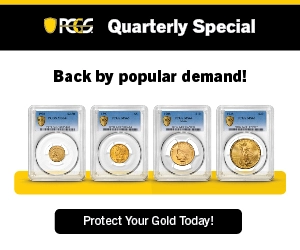By Everett Millman – GainesvilleCoins.com …….
For reasons of historical economic privation by its powerful neighbors in Great Britain, Ireland does not have a reputation for yielding very much buried treasure. You’re simply far less likely to find old gold or silver coins in Ireland and Northern Ireland than on the British mainland. This is because there was frankly less of it present on Irish soil throughout history.
This reality makes the recent designation of a group of 17th-century coins found in Northern Ireland as treasure all the more exciting.
Irish Treasure Cache Shows Diverse Origins
The find–which, by standards in Ireland, qualifies as a “hoard”–contains four coins that all date to the 1600s.
Three of the coins are Elizabeth I silver sixpence. The other, surprisingly enough, is a Spanish 4 reales.
Each Spanish real was struck from 90% pure silver while these silver sixpence coins were about 92% pure (The Royal Mint raised the purity of its silver coins to .925 fine sterling silver in 1820).
Both types of coins come from the era of hammered coinage, where coins literally had to be hammered by hand into shape. The first milled (machine-made) sixpence coins in Britain would not be churned out by the mint until 1674.
Image courtesy of Portable Antiquities Scheme (U.K.)/The Trustees of the British Museum [CC BY-SA 2.0]
As a result, these coins have the cruder appearance and imperfect shape seen in the example above.
The silver sixpence has long had a reputation as a “lucky coin” in British and Irish traditions, as well.
Meanwhile, Spanish silver coins were spread all around the world during the Age of Exploration. This included the American colonies and, apparently, the British Isles.
This 4 reales is thought to have been minted in South America. The coin was essentially Spain’s version of the half dollar: 4 reales were half the size and denomination of the famous “Piece of Eight” 8 reales Spanish pillar dollar.
Coroner Ultimately Confirms Treasure
All four of these 17th-century silver coins were finally declared treasure by the local coroner’s court in Belfast.
The finders wait nearly two years for the official confirmation: the hoard was discovered in 2016 in County Down, near a village called Cloughy (sometimes spelled Cloughey or Cloghy).
The coins will now be valuated by the British Museum and offered for sale as a group to National Museums NI (Northern Ireland).
You can find more about these coins reported in The Irish News.
* * *
The opinions and forecasts herein are provided solely for informational purposes, and should not be used or construed as an offer, solicitation, or recommendation to buy or sell any product.
